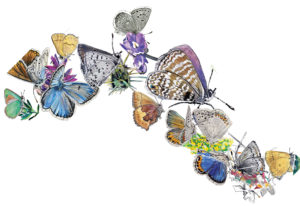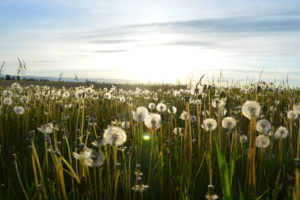Google “mulch” and you’ll find university websites from Alaska to Florida touting mulch as one of the most environmentally friendly and effective tools for improving a backyard garden. Covering bare ground with a two- to four-inch layer of organic material inhibits weed growth, moderates temperature, prevents compaction, conserves moisture, improves soil nutrition and structure, enhances water absorption, and reduces erosion.
But that mulch deters native bees from digging their nests, since most lay their eggs in burrows in the ground. After mating, a female bee excavates a tunnel ending in a “brood cell” that she lines with leaves or other material. Inside, she makes a ball of pollen and nectar on which she lays a single egg. She repeats this process three to ten times, making 20 to 30 trips for supplies for each cell.
None of that is possible under a thick layer of mulch. Bee specialists would prefer we avoid mulch altogether, but they know mulch’s benefits sometimes make that untenable, especially in a drought. “Put the mulch where you have large expanses of open space and know you’re going to have weeds or need to conserve water,” says UC Berkeley bee expert Gordon Frankie.
But leave a minimum of 50 percent of the dirt in your garden bare. That way, you’ll preserve nesting habitat while saving water and keeping weeds at bay.

.jpg)



